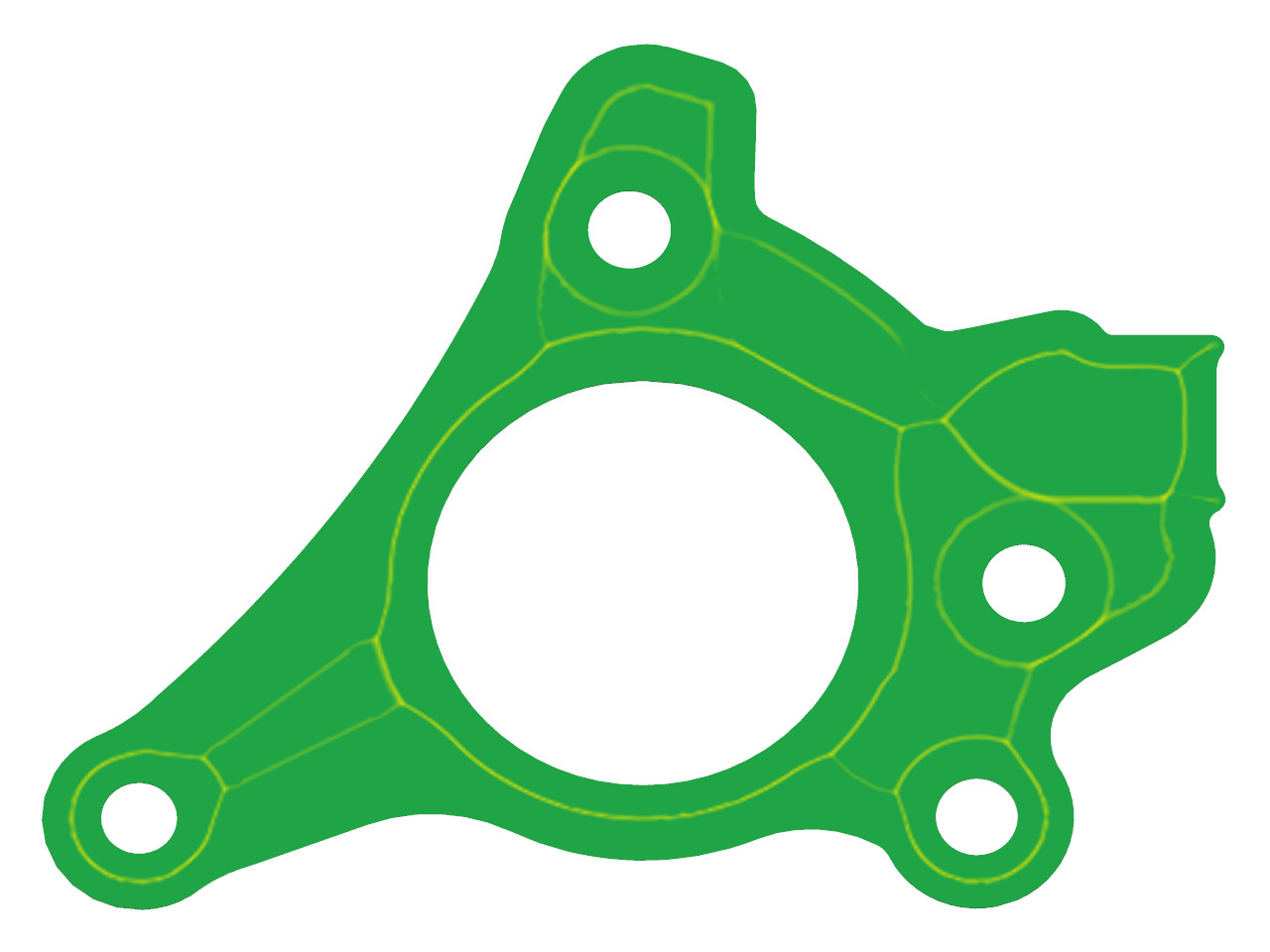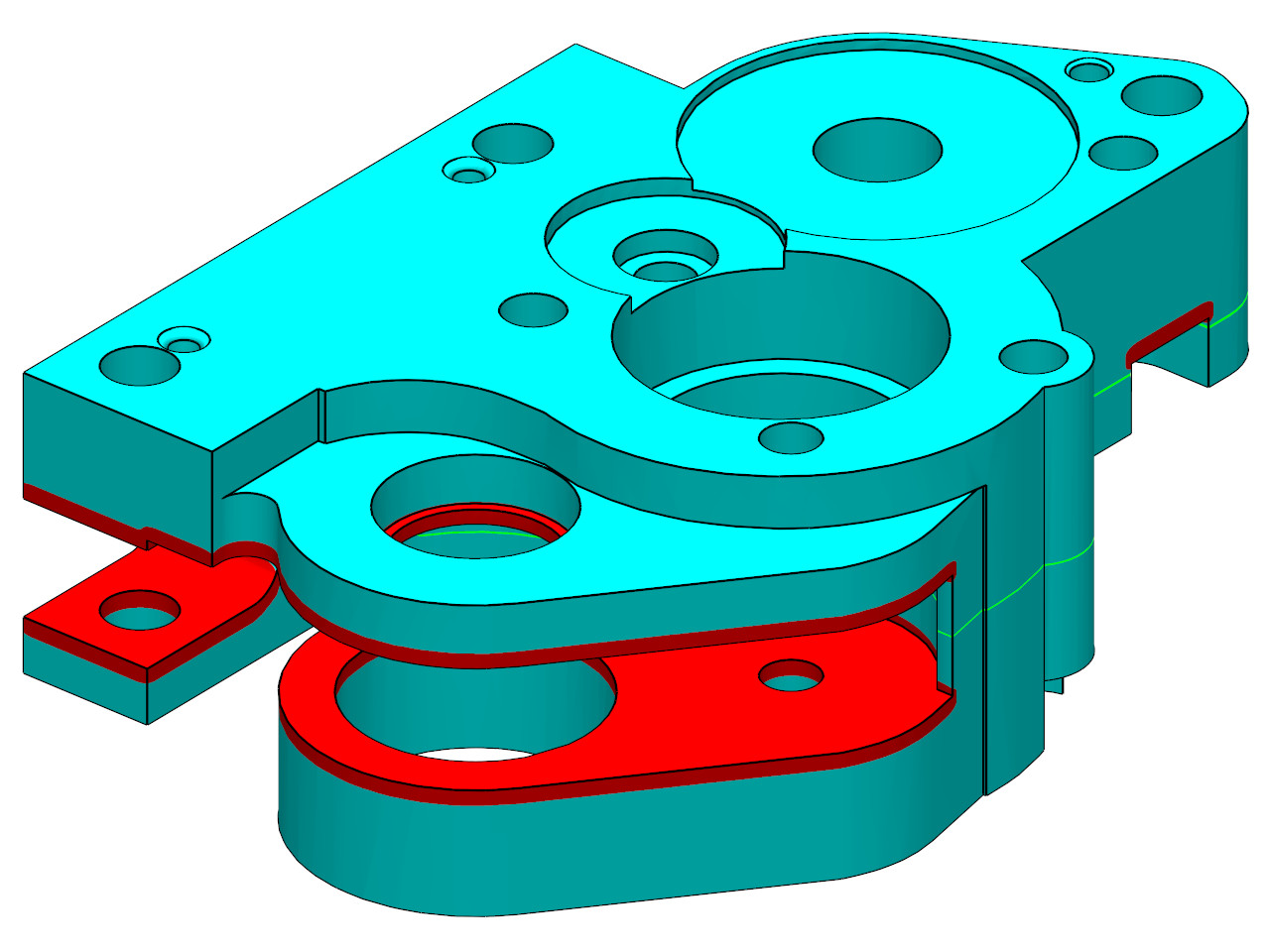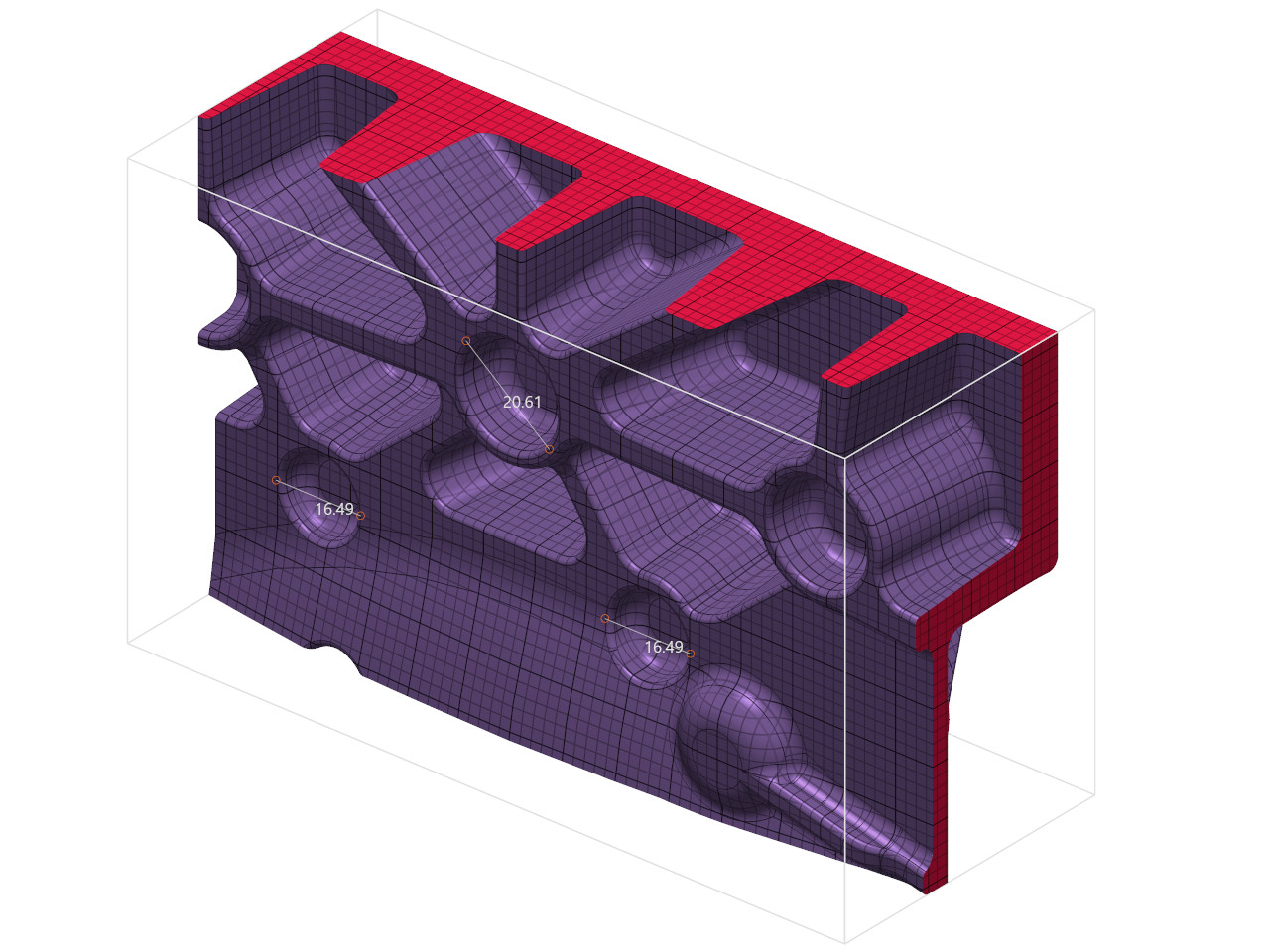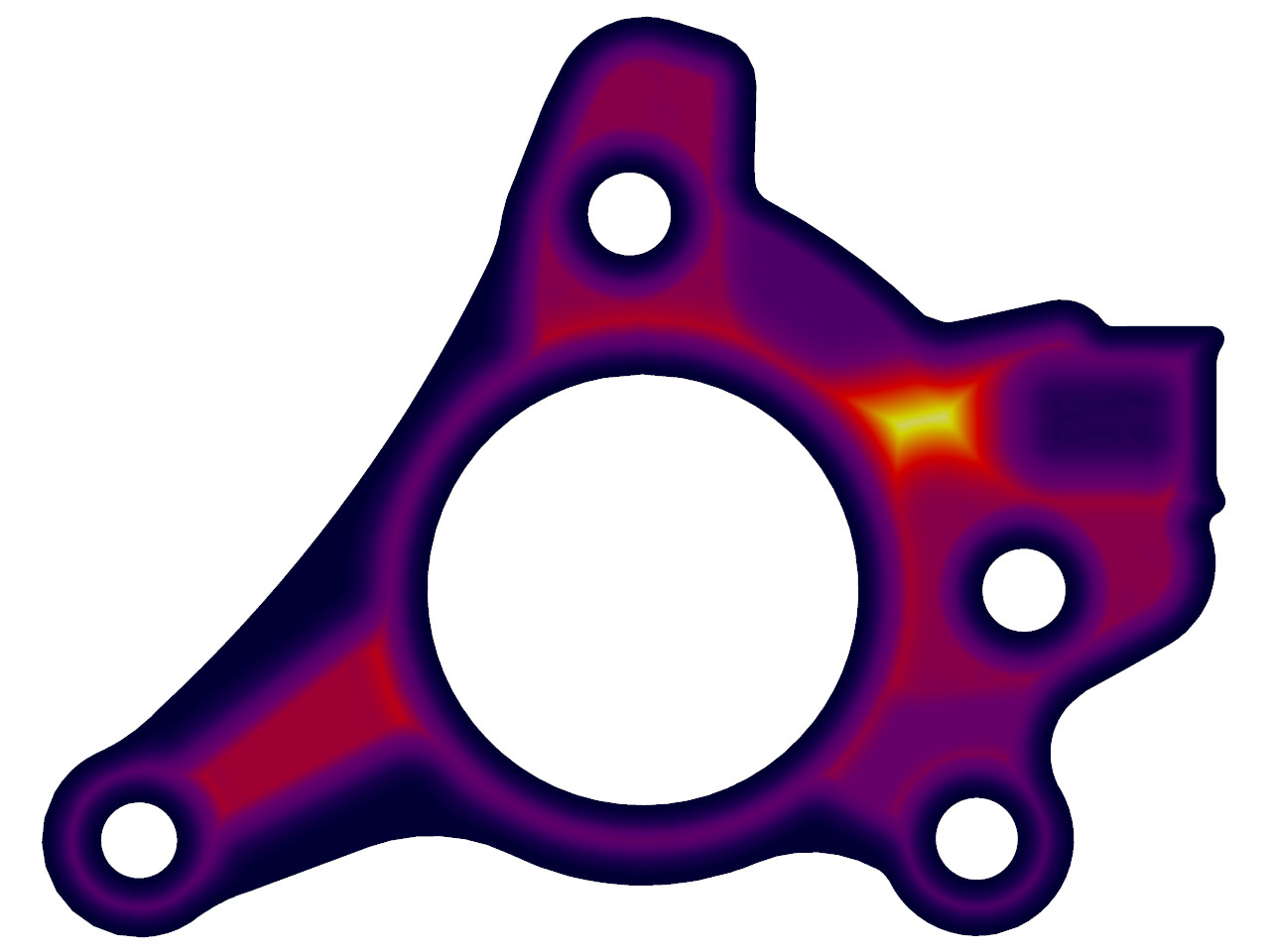Castings reveal many potential problems already through their geometric properties. On this basis, process development can be accelerated at an early stage. Geometric analysis is particulary useful for evaluating the risk of cod breakage, demoldability, volume of sprue material, and the required space for core prints. For this reason, Visiometa comes with a variety of algorithms and techniques that help users to obtain as much relevant information as possible.
One helpful quantity that is easy to determine numerically is the surface distance which helps to compute a 3d image of the local wall thickness. By studying this so-called thickness map, users get a better understanding of mass distribution and structural strength of the cast part. Calculating the distance field is also a prerequisite for many more advanced analyzes that use the wall thickness as an input value. Thanks to Visiometa's sophisticated algorithms, however, the results are ready within just a few seconds.
Visiometa also calculates the medial axis of any given model. In technical terms, it is the set of all interior points of a body that have more than one nearest point on its boundary. This defines a kind of geometric center that is used in a variety of practical applications, such as automated pattern recognition or surface reconstruction. In addition to advanced modeling techniques, such as selective thickening or thinning of component areas, the medial axis also helps to understand the topological structure of complex models.

An important goal of the early geometric review is to ensure demoldability. For this purpose, Visiometa calculates the resulting undercuts of the casting for each specified mold partition. In contrast to many other software tools, our numerical approach enables a precise undercut and draft angle analysis for mold partitions of arbitrary complexity.

Beyond algorithmic analysis, Visiometa also offers various techniques for the manual examination of part models and calculated numerical data. For better assessment of spatial dimensions, for example, users can project a rectilinear graticule directly on the displayed geometry as well as any reference surface or background. An interactive tapeline tool can then be used for measuring precise distances or angles.

A fundamental visualization technique is the so-called volumetric clipping, which restricts the visible part of the workspace to the specified body or its complement. This can be a cuboid, a cylinder or any other convex solid. By clipping away the unwanted volume, users can see areas that would otherwise be obscured, analyze spatial data below the surface of a model, or simply examine the cross-section of a body. Thanks to our highly optimized GPU software, the clipping bodies can be changed and transformed in real-time via mouse input, providing instant visual feedback on even the most complex data sets.
